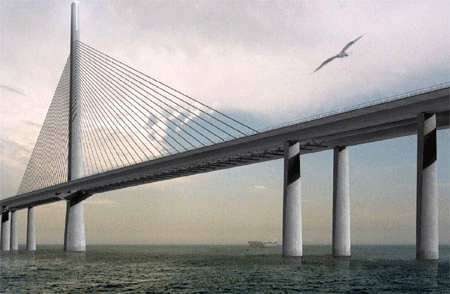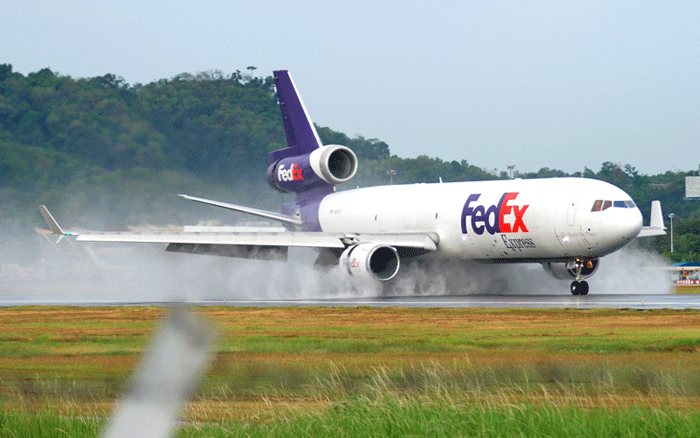 |
 |
|
| |
||
|
Vol. 8 No. 6 WE COVER THE WORLD Monday January 19, 2009 |
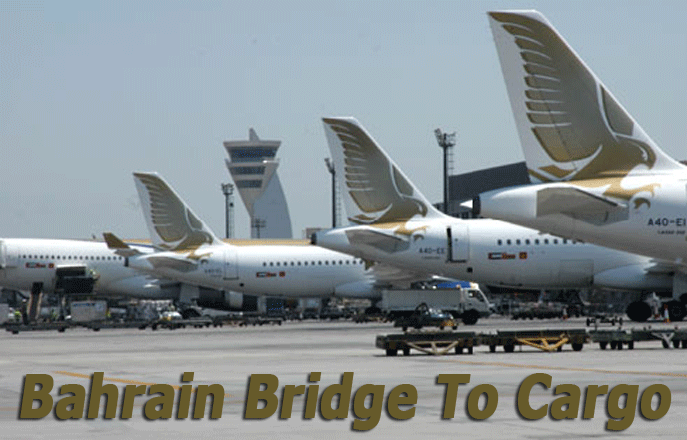
(Exclusive)—The
Bahrain Airport Company operator of Bahrain International Airport (BIA) is
investing in the upgrade of the cargo handling facility here.
 "We
are approaching the expansion of cargo handling capacity in three stages,"
according to Osama Al Ali, (right) CEO of Bahrain Airport Company.
"We
are approaching the expansion of cargo handling capacity in three stages,"
according to Osama Al Ali, (right) CEO of Bahrain Airport Company.
"The short term plans are aimed at enhancing
existing terminals.
In the medium run we are looking to increase
the number of facilities and total capacity levels, and the long term objective
is to operate as a global cargo hub, seamlessly integrated with the country's
road and sea networks."
With the advancement of a variety of new infrastructure
projects, Bahrain is demonstrating the seriousness of its ambitions towards
becoming a regional transportation hub.
This year will mark Bahrain's increasing foothold
in regional and global logistics, provided the planning of the projects stays
on track.
Bahrain is moving full steam ahead with building,
upgrading and expanding several key transportation hubs. Although the credit
crunch is slated to cause some completion dates to be revised, the year 2009
will mark a milestone for the country's primary infrastructure projects.
Construction activity on the Qatar-Bahrain Bridge
is due to begin by the end of this month, according to a spokesperson from
the Qatar-Bahrain Causeway Foundation, a joint government body overseeing
the bridge's construction.
Billed as the world's longest marine causeway,
(the bridge, when it is finished, will be 4 k longer than the current longest
bridge in the world, the new Chinese Shanghai-Ningbu bridge, coming in at
a total of 40 k, short of just under 25 miles) the "Friendship Causeway"
- estimated at a total cost of $3bn - is being touted as one of the most important
infrastructure projects in the region.
|
The construction activity on the Qatar-Bahrain Bridge is due to begin the end of this month. Development drawing for the Khalifa Bin Salman Port and Industrial Area at Hidd which is scheduled to be in completed the first week of February. |
In early January, Sheikh Mohammed
bin Essa Al Khalifa, chief executive of Bahrain's Economic Development Board,
told local media that the Friendship Causeway "will strengthen Bahrain's
position as the best place in the Middle East for companies to locate in order
to develop their businesses across all Gulf Cooperation Council economies."
Around 40km of twin carriageway will decrease
the journey by road between the two countries from five hours to a mere 30
minutes, with the bridge serving as a natural continuation of the King Fahd
Causeway, which connects Bahrain and Saudi Arabia. Moreover, the causeway
is slated to provide a connection for future high-speed freight and passenger
rail lines.
Crown Prince Sheikh Salman bin Hamad bin Isa
Al Khalifa has hailed the bridge as "an outstanding landmark in bilateral
co-operation," as well as "an embodiment of deep-rooted ties and
a reflection of family kinship."
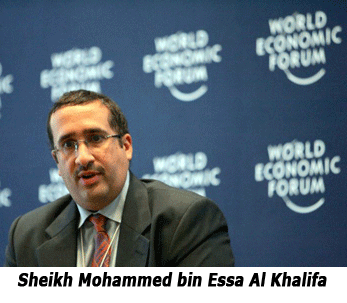 However,
the global slowdown in the construction sector could potentially delay the
start of building activities.
However,
the global slowdown in the construction sector could potentially delay the
start of building activities.
In early January, Nayef Al Emadi, secretary
general of the Qatar-Bahrain Causeway Foundation, told local media that the
final cost of the project was being recalculated, which could possibly push
back the start of construction.
He reiterated, however, that as of now mobilization
and site preparations should start at the end of January, after which construction
is expected to follow.
The Bahrain-Qatar Bridge is part of the Kingdom's
ongoing investment into strengthening its position as a regional transport
hub. Bahrain is looking to further capitalize on its strategic location close
to big markets, including Saudi Arabia and Iran.
In addition, the King Fahd Causeway is currently
undergoing an upgrade as part of a five-year plan to reduce traffic.
The cost of the project is estimated at SR 62.5m
($16.67m) and aims to increase vehicle intake capacity by 300% and cargo capacity
by at least 200%.
In November, global terminal operating company
APM Terminals informed local media that work on the new Khalifa bin Salman
Port, dubbed the "Bahrain Gateway", had entered its final stage.
The new port is designed to cater to the region's
need for a substantial and efficient trans-shipment centre in the northern
Gulf. With an initial capacity of
1.1m twenty-foot equivalent units (TEUs), the new container terminal will
far outstrip the Kingdom's current container capacity at Mina Salman.
The handover date from the government is scheduled
for the first week of February.
Last year also saw the start of upgrade and
expansion plans for Bahrain International Airport.
Enlargement of the terminal building is to provide
additional aircraft parking stands, initially raising airport capacity to
15m per annum by 2011, and with provision for a second phase expansion that
would increase capacity to 22m by 2020.
The estimated number of passengers for 2008
stands at 9 million.
Gordon Feller
Fedex Bright Spot Is India
 Amidst
sourced reports that FedEx Express will begin furloughing pilots elsewhere,
numbers for India continue to be a bright spot if also down a bit.
Amidst
sourced reports that FedEx Express will begin furloughing pilots elsewhere,
numbers for India continue to be a bright spot if also down a bit.Adding things up, the company has had quite a good run in India over the last few years, but now as that market also experiences the effects of the downturn FedEx may have to recalculate its projections for double-digit growth here.
As Taarek Hinedi, FedEx's Managing Director India Operations recounted to this correspondent:
"Globally when air cargo business was growing at 6 percent in India it grew at 13 percent."
Now, with the situation becoming tougher, Hinedi believes that India air cargo could "grow at 7+ percent".
That highlights the bright landscape of the industry in India many here think.
Even so, the MD was worried about the present situation – "challenging times," as he put it – and "companies will have to adjust their operations."
As for FedEx, he said: "While overall volumes are being impacted we are also seeing industries witnessing growth which is balancing the volumes. It is a mixed bag.
“In the case of air express there is good news as the volumes of high value express cargo are increasing.
“Hence, even though the economy is slowing, FedEx is doing high-value quality business.
“This year,” he said that FedEx “expects the conditions to remain challenging.” Forecasting, he said that "the current economic weakness would continue" and those companies with strong foundations like FedEx will be able to improve their competitive positions in economic downturns.”
For FedEx and Hinedi, India meant growth.
He had his reasons.
“The logistics industry in the country,” he said, was "evolving rapidly with the market reaching a value of $125 billion by 2010; an increase from approximately $100 billion in 2007.”
Hinedi said:
"Given the overall outlook for growth in India and despite the challenges of the current economic situation, the Indian logistics market is experiencing an impressive growth primarily due to the manufacturing, real estate and retail growth in the country adequately fuelled by the other economic activities. “Contrary to the economic scenario, commercial activities in the country will attract more international and local players in the market."
All this will be possible if the industry gets all its processes "streamlined and simplified."
He cautioned: "If packages and people don't move swiftly, the purpose is defeated."
Did he feel that five years from now, FedEx's freighters would touch down at non-metro destinations in India? Without replying directly, Hinedi said that growth was being witnessed across the country. That was making all regions equally important.
"Multinational Corporations are looking for investments lower-cost locations with a foresight to leverage on low rentals, low manpower cost and other operational costs," he said.
FedEx felt that with "the increase in trade activities the role of logistics and supply chain companies also was being built up making non-metro markets an important destination for express transportation.”
It was to further such trade activities that FedEx recently took the initiative to bring American business persons to the country. The response that the trade teams received was encouraging.
As Hinedi put it:
"The trade mission was aimed at offering small and medium-sized U.S. businesses across sectors (manufacturing, transportation equipment, engineering, business services, consulting, architecture, information technologies, pharmaceutical, and consumer goods) an understanding of doing business in India.
“The initiative from FedEx was taken to help small and medium enterprises—keen to source and sell in the global marketplace—understand and simplify international trade.”
Tirthankar Ghosh
Black Wings Color The Sky
 This
week in America like no other begins today, Monday with the nation honoring
Dr. Martin Luther King as is now the custom every year on a day set aside
to recall the slain civil rights leader, and on Tuesday with Barack Obama
being sworn in as the first African/American President of the United States.
This
week in America like no other begins today, Monday with the nation honoring
Dr. Martin Luther King as is now the custom every year on a day set aside
to recall the slain civil rights leader, and on Tuesday with Barack Obama
being sworn in as the first African/American President of the United States.
Worth noting at this point, that people
of color have been carried aboard aircraft since the beginnings of manned
flight.
Seldom has the lot of black aviators been
so graphically described as in a book from Smithsonian Press titled “Black
Wings,” compiled and written by Von Hardesty.
Mr. Hardesty, a white man, is also Curator
of Black Wings, a permanent exhibit at The National Air &Space Museum
in Washington DC.
Last year NASM and Black Wings welcomed more than nine million visitors.
Black Wings (the book) tells the story of how one group of Americans
overcame enormous obstacles to break into aviation.
African Americans shared the universal dream
of flight. But for almost 50 years after the Wright brothers’ historic
flight in 1903, racial discrimination denied black Americans access to
this important sphere of technology.
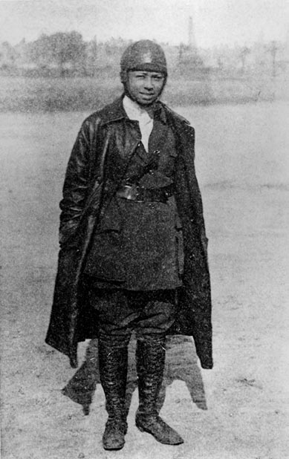 Although
this book is all about military aviation, failing to even mention August
Martin, the first licensed black American captain of a commercial airliner
(Seaboard World Airways Cargo), Black Wings does deliver a deep dish look
at the fortitude and determination and just plain guts that it took, as
an entire race tried to gain respect and equal treatment at a time not
too long ago when much of America was racist.
Although
this book is all about military aviation, failing to even mention August
Martin, the first licensed black American captain of a commercial airliner
(Seaboard World Airways Cargo), Black Wings does deliver a deep dish look
at the fortitude and determination and just plain guts that it took, as
an entire race tried to gain respect and equal treatment at a time not
too long ago when much of America was racist.
During World War II, black pilots and other
people of color actually fought two wars: one against America’s
enemies and another against the enemies of equal rights guaranteed all
citizens by the U.S. Constitution.
Despite all of that during World War II,
an all black unit known as The Tuskegee Airmen in Europe and North Africa
courageously fought for freedom from fascism.
But at home black pilots were still fighting
discrimination.
In April 1945, 60 black officers from Tuskegee’s
477th Bombardment Group, stationed in Indiana, were arrested when they
tried to enter a segregated officers club, ironically named Freeman Field.
A few days later, 101 black officers were
arrested when they refused to sign an order stating that they “read
and understood” that they would use segregated facilities only.
As a result of the Freeman Field protests,
white officers were replaced with blacks under the leadership of Col.
Benjamin O. Davis Jr.
Davis became the first black to command
an Air Force base in the United States.
Elsewhere, Black Wings includes the story
of Bessie Coleman (right).
Talk about determination.
In 1922 Bessie Coleman became the first
licensed black pilot in the United States.
Black Wings features over 200 photographs.
More Info: Black Wings by Von Hardesty
ISBN :0061261386
Hardcover $21.95
Smithsonian, A Division of HarperCollins Publisher
Geoffrey









